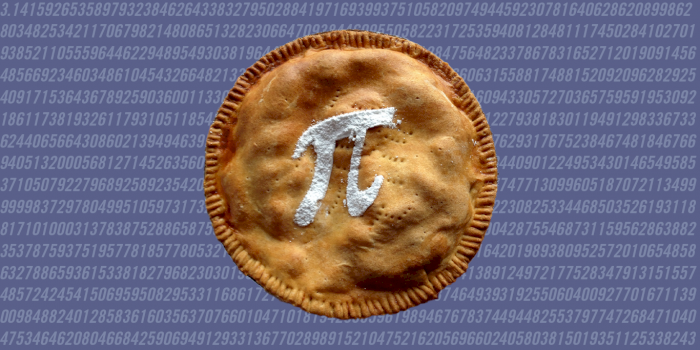Pi Day Celebration
- Wednesday March 13 2019
- Educator Resources
March 14 is Pi Day, celebrated in honor of the first three digits of the infamous, irrational number pi (π) – 3.14!
Pi is a fascinating number, but many students (and adults!) have a difficulty understanding what exactly pi is and why it’s important. Pi Day is a great opportunity for students to learn about the practical application of pi and how it’s useful in our everyday lives.
Pi is used to calculate how much icing is needed to cover a round cake, how much paint will fill a can – it’s even used in GPS calculations. In nature, pi is in our DNA’s double helix, a rainbow and the pupil of an eye.
Classroom Activity
What is pi? It’s the ratio of a circle's circumference to its diameter (or its area to the square of its radius). Help students discover this ratio with a simple hands-on activity:
Supplies
- Yarn or string
- A cylindrical object (a can works well)
- Scissors
- A pencil or marker
- Paper
- Wrap the string tightly around the cylinder. Cut the string so it is exactly long enough to go around the cylinder. (This string represents the circumference of the cylinder.)
- Trace the outline of the bottom of the cylinder on the piece of paper and cut out the circle.
- Fold the circle in half. (This crease represents the diameter.)
- Hold the string taut, and line it up with the diameter (crease) of the paper circle. Mark the end point on the string with a marker or pencil.
- Starting at this end point, line the string up against the diameter again. Repeat until you run out of string.
How many diameters fit along the length of the string? The answer should be 3 with a little room to spare (that’s 3.14). This is pi in action!
No matter the size of the cylinder, the number of diameters you can fit along the string will always be roughly 3.14!
NGSS Connections
Grades K-2: Students can look for circles throughout the room, their home and the community. Finding circles in shapes like cylinders will help them in understanding the relationship of two dimensional shapes to three dimensional shapes. K.A.G.3
Grades 3-5: Students can understand the properties of a circle that define it as such. They can also explore the symmetry of the shape as can be defined by the diameter. 4.G.A.3
Middle School: Students can begin to utilize the value of pi in calculating the area of circle. Recognizing that pi is a ratio between the diameter and the circumference. If you took a piece of string, tied it into a loop and then made various shapes out of it, which shape would give you the greatest volume? A circle. 8.G.C.9
High School: Students can recognize the properties of circles that define them as such. HSG.C.A.1

